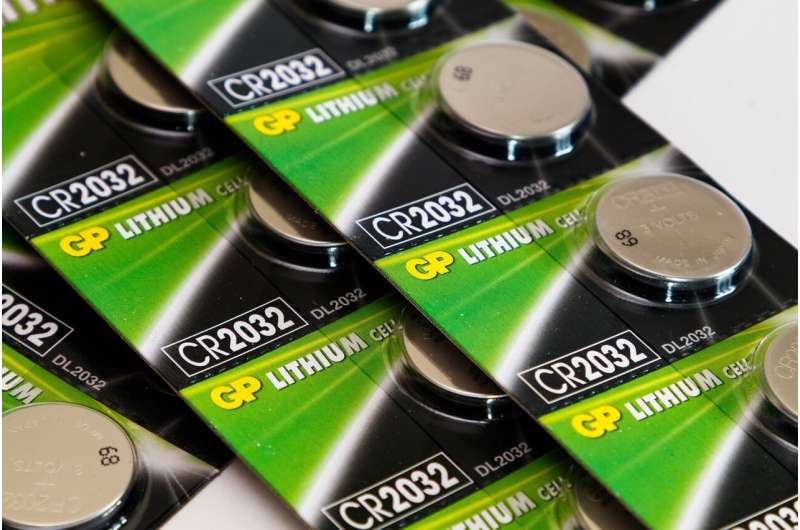This article has been reviewed according to Science X's editorial process and policies. Editors have highlighted the following attributes while ensuring the content's credibility:
fact-checked
trusted source
proofread
Study reveals severe impact of button battery injuries in young children

Button batteries power numerous commonly used devices in the home. A study examining injuries from button battery ingestion found that a combination of the young age of the child, button battery size and delayed diagnosis creates a "perfect storm" that increases the chance of severe injuries and death.
A University of Sydney-led review has found it can take less than six hours after a child has swallowed a button battery for severe injuries and complications to occur. In fact, severe injury can occur in as little as two hours.
The group most at risk for severe injury or death were children younger than 2 years old who had swallowed a button battery that was 20 mm (2 cm) in diameter or more.
The study, which examined more than 400 cases of button battery injury worldwide, not only catalogs the potential for devastating injuries caused by their ingestion or insertion into the nose or ear, but the challenge medical professionals face in diagnosing cases. The findings are published in the World Journal of Pediatrics.
Despite Australia introducing world-first, mandatory safety standards for child-resistant packaging of button batteries, the researchers say that in order to protect children, the industry needs to redesign button batteries. This is because current standards only focus on child resistant packaging and product compartments.
Additionally, parents need to be made aware of the potential danger of button batteries and the need for safe storage of batteries and appropriate disposal.
Button batteries are small power sources used in an increasing number of common household items, including remote controls, watches, toys, and hearing aids.
However, button batteries are a hazard for curious young children who can accidentally swallow button batteries or insert them in their ears, nose or mouth but are unable to communicate clearly what has happened.
The researchers showed that batteries that are 20 mm in diameter or more are the most dangerous as they are small enough to be easily swallowed but not small enough to reliably pass through a child's esophagus. Smaller batteries can also cause injury and long-term complications.
Delay in removal of a button battery can be fatal. The study found children who did not have the button battery removed within six hours were almost eight times more likely to die.
"Once a child has swallowed a button battery, it becomes a race against time since injury can occur within a couple of hours," says lead author Dr. Carlos Nunez, from the Australian Pediatric Surveillance Unit at University of Sydney.
"Often battery ingestion or insertion is not witnessed by adults. We need primary and secondary preventative strategies to restrict unintended button battery access and the development of evidence-based guidelines to accelerate diagnosis and optimal management."
The most common initial symptoms of a button battery swallowing in a child are choking, difficulty feeding, and coughing. However, over time these symptoms change (e.g., vomiting, drooling) and may be mistaken for other health issues such as gastroenteritis or a respiratory infection.
The lead author, Christopher Tran said, "It is imperative that a potential button battery ingestion always remains in the back of clinicians' minds when dealing with acute onset respiratory or gastrointestinal symptoms in young children." When a child swallows a button battery, it can cause a chemical reaction in the esophagus that creates a solution that burns and dissolves the tissue inside the child's throat.
The study found that more than one-quarter (26%) of injuries from swallowing button batteries were burns to the child's esophagus.
Almost one-quarter (23%) were extremely severe injuries, which included the battery burning a hole through the esophagus into the trachea.
In severe cases, burning can also result in the creation of a hole in a major vein or artery, causing a fatal loss of blood. The study found that nearly 9% of all the complication cases of ingestion resulted in death and the most common factor was bleeding.
"We need global regulations to implement the same regulatory requirements that Australia and more recently the U.S. have implemented. Because this is a global issue, and parent's education about safe battery storage and disposal and health professional education about the need for timely diagnosis are also critical," says Professor Elizabeth Elliott.
More information: Christopher Tran et al, Complications of button battery ingestion or insertion in children: a systematic review and pooled analysis of individual patient-level data, World Journal of Pediatrics (2024). DOI: 10.1007/s12519-024-00833-y




















